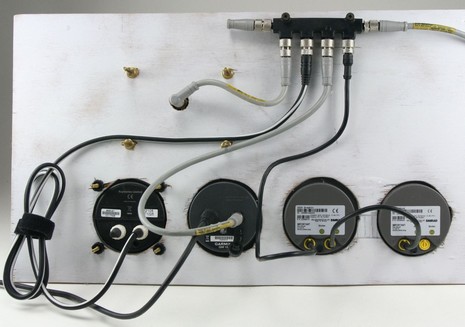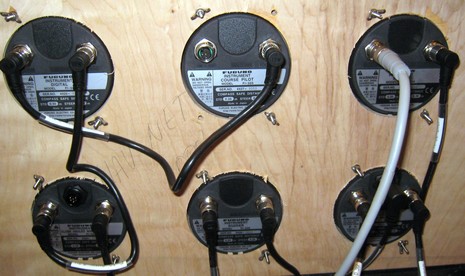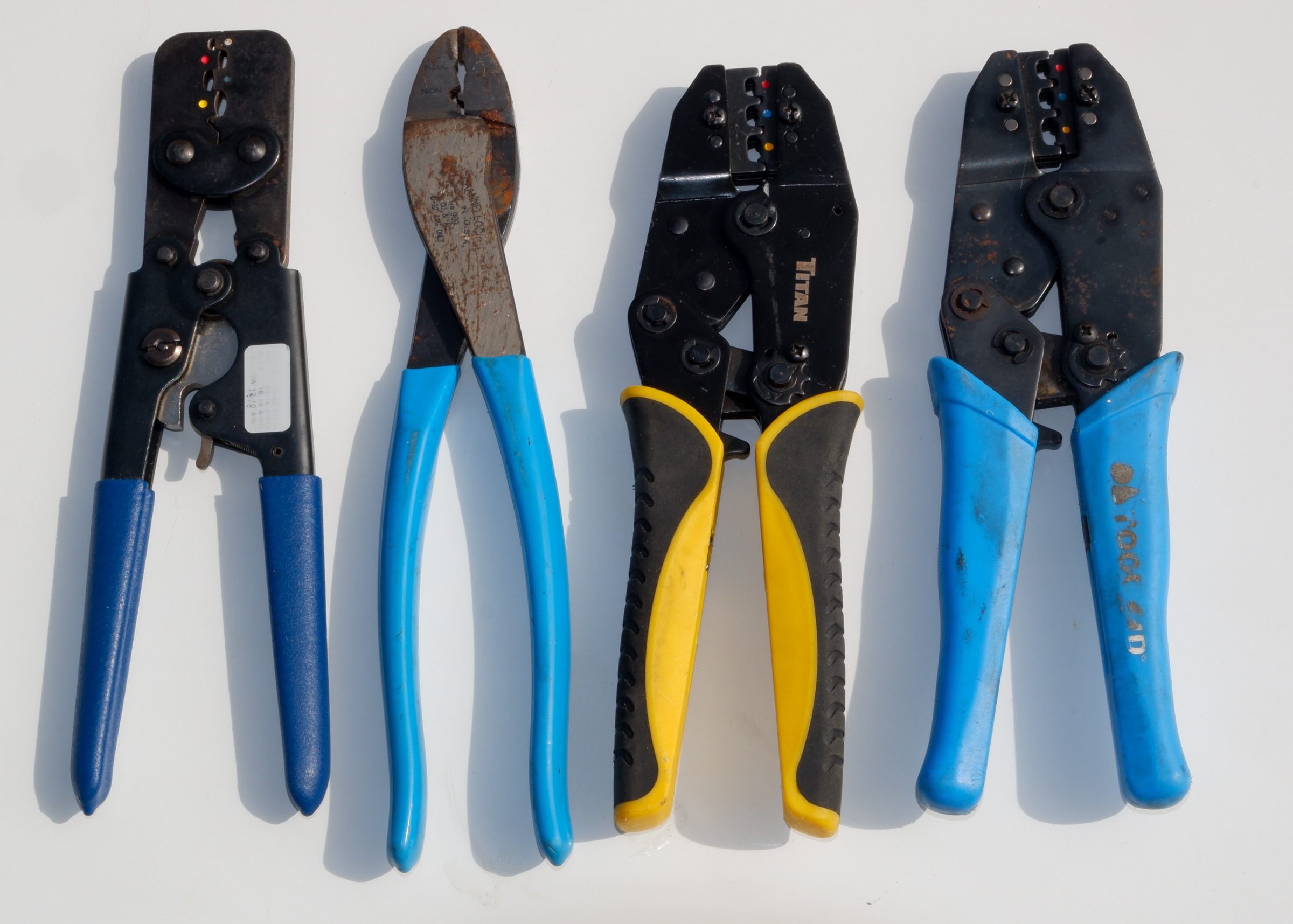NMEA 2000, smart mixing

While the extreme N2K cable mixing and daisy chaining shown yesterday did seem to work OK in lab conditions, here’s a smarter approach for a serious boat system (bigger here). The main change is that every cable section possible is NMEA “approved,” which means it’s built to the ODVA DeviceNet standard (that NMEA borrowed). While every N2K cable and connector seems vastly superior to the fine-gauge 0183 wires, crimp connectors, terminal blocks etc. they replace, DeviceNet seems the best of the lot—particularly in terms of interference protection—and I don’t see that it’s significantly more expensive or harder to work with (especially given the growing number of install doodads, even breakout boxes).
And if DeviceNet’s rigorous spec prevents a hard-to-run-down EMI problem sometime in a boat’s life, then it’s probably the least expensive cabling system. This stuff gets really techy, but here’s are some tidbits from a DeviceNet fan:
Do you know why there is 120 ohm resistor at the end of the NMEA 2000 trunk line? As the electrical wave propagates down the trunk line and comes to the end or terminator, the signal is absorbed into the resistor and does not reflect back down the line. This assumes that the characteristic impedance of the data pair is 120 ohms, otherwise there will be a reflection which causes ringing and the potential for an indistinguishable signal. Many of these cheap imitation cables coming on the market don’t have a characteristic impedance of 120 ohms, thus the waveforms are dubious. Some of the cables don’t have a shield around the power and ground which allows noise to creep into circuits through conduction on the supply lines. Some don’t have shields around the data so they emit or pick up energy from switching noise on the power lines or from external sources. Granted, it all must be taken in context, a 22’ day sailor without single side band, radar and bundles of wire may never have a problem, however vessels with high power RF or bundles of wires are a whole different story.
It’s my understanding that Molex and Maretron have already gotten NMEA approval, and that three other companies—Belden, Turck and Lumberg—have DeviceNet cabling that could easily get approval. Now, if I were doing an all Raymarine or all Simrad boat, I wouldn’t hesitate to use their proprietary cabling. SimNet has been around for years now, and I haven’t heard of any problems, and SeaTalkNG does have its pluses. But personally I’d be unlikely to do an all anything system, and I’d just use those made up patch cables seen above or a breakout box to maximize DeviceNet. (As for smaller boats and systems, most anything seems to work, and, if there are problems, plug-n-play makes them easy to diagnose.)
However, NMEA’s rule against daisy chaining devices along a drop line, as seen with the two SimNet IS20s above, may well be overly restrictive. I think all the devices that currently support chaining—like the Raymarine ST70, many SimNet products, and Furuno’s FI50 instruments—pass data through whether they’re on or off, or even broken. The rule may assure that any single device can be removed from a network without cutting off any other device, but the install efficiency of daisy chaining may trump that easily-solved issue. For instance, if you had to pop out one of the FI50s below, you can make the network whole again by just connecting the male and female DeviceNet cables you unscrew. I’m hoping to receive samples of this Furuno gear tomorrow, by the way, and we’ll be looking at how they compare to all the other N2K instruments. Good times!














Ahhhh, Panbo! Where else can you go if you get excited about the back of an instrument panel?
Did you know that………. you cannot connect the new Garmin GMI-10 data displays as nodes off of the NMEA 2000 backbone cable without powering EACH GMI-10 display. What gives with that, completely negates the advantages of NMEA 2000. Even the photo on the outside of the GMI-10’s box showing a sample connection to a NMEA 2000 back bone is wrong. Only on page 5 of the installation manual, last line is the secret reveled “The GMI 10 is not powered by the NMEA 2000 network, it must be separately connected to the power source”. So the installer has to power the backbone cable in accordance to the LEN load factor, and then power EACH GMI 10 display.
Call the GMI-10 what it is, a glorified NMEA data repeater, being marketed as a NMEA 2000 device. False advertising.
PSDave, I think you’ve gotten a little carried away. Yes, it’s true you have to individually power the GMI 10s, as I’ve mentioned here a couple of times, but otherwise the GMI 10y are good NMEA 2000 citizens. I guess Garmin made this decision so that it could put especially bright backlighting in the instrument without putting a big power load on the backbone.
I was disappointed to learn that NMEA 0183 data coming into a GMI 10 is NOT bridged onto NMEA 2000.
I like the power being seperate, even if there was enough current capacity for my devices …
I have an overall preference that my power and data signal are seperate, and only the devices that obviously need to be on when the N2K bus is operating are powered from it. I don’t know if I need that from my displays, as an on/off button will do, but in general I favor the idea.
As N2K permeates into all sorts of boat systems, we might find ourselves keeping the network “up” many hours before and after our boats are underway. Between a combination of limited battery capacity and when at dockside limited charging capacity (e.g. power unnecessarily going to network devices isn’t available to charge hungry batteries) I actually can’t envision any devices I wouldn’t want to individually or as a group power up/down seperate from the network.
Until we can command sensors and displays to turn on/off over the network (I read that there is an N2K standard being developed for this), the only other option is to have seperate power to sensors and displays for boats that have extremely limited power sources.
However … it would have been ideal if the power cabling was setup for daisy chaining (e.g. two power connectors per display), and in doing so the choosen connectors were extremely easy to splice onto standard wire, so an installer can get just the right length without any extra weight, nor need to buy pre-built cable.
Come to think of it … would be nice if such an auxillary power arrangement was part of the N2K standard so all N2K devices seperatly getting power use the same type of connectors, and can be daisy chained just as I suggest here for displays.
Disregard my comments about that N2K standard under development.. that is to support three wire power systems, and probably dosn’t exactly apply to commanding the device itself to power up/down, but rather to a special circuit breaker doing so.